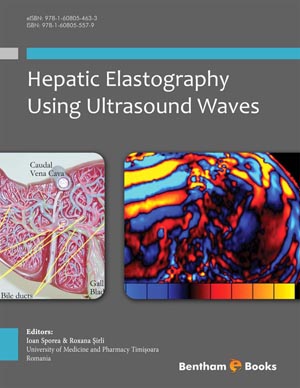Abstract
Shear wave elastography is a new technique designed to overcome some of the disadvantages of other elastographic techniques. It is based on supersonic share imaging, an ultrasound-based technique used for real-time visualization of soft tissue viscoelastic properties. This technique is based on the combination of a radiation force induced into the tissues by focused ultrasonic beams and a very high frame rate ultrasound imaging sequence able to capture in real time the transient propagation of the resulting shear waves.
Shear waves’ propagation induces small tissue displacements which are recorded by the Ultrafast™ imaging system, and measured using tissue Doppler techniques. SWE offers as major innovations the ability to measure area and distance ratios, a high spatial resolution and real-time capabilities.
The technique produces an image where true local tissue elasticity is displayed in a color map in "real time". Elasticity is displayed using a color coded image superimposed on a B-mode image. The true elasticity is assessed based on Shear wave propagation speed into the tissue. Thus the technique permits a quantitative mapping of liver tissue viscoelasticity.
The technique is available on the Aixplorer® system (SuperSonic Imagine, France) and initially was used for the evaluation of breast nodules, of prostate elasticity, for the evaluation of muscle and tendon stiffness and for thyroid disease diagnosis. Preliminary results showed a real value of this method for liver stiffness estimation in patients with chronic hepatitis.
Keywords: Shear wave elastography, liver stiffness, viscoelasticity.






















